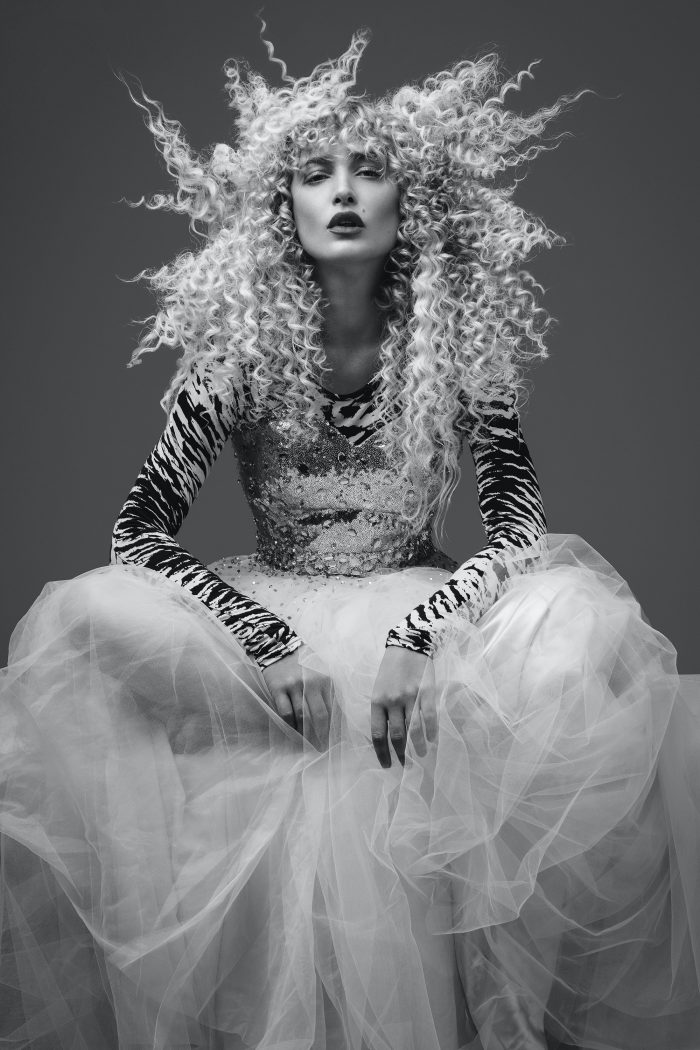Perhaps I am a cynic but it appears to me, far too commonly, that words have become empty vessels bereft of worth and meaning.
Maybe it is because I am a writer and storyteller, or maybe it is because I grew up with the understanding that words mattered and if you weren’t true to your word, you were sh*t.
But here we are in the 21st century where accountability holds little sway with words alone. That’s why legislation is so important—because it creates laws that legally hold the fashion industry accountable for their gross violations of basic human welfare and aims to transform the industry entirely. And it’s about damn time.
One such piece of legislation is the Fashion Workers Act.
While not a federal act, the Fashion Workers Act is aimed at The United States’ fashion capital, New York City.
Fashion Workers Act is legislation that will support creatives and models in the fashion industry by holding management companies accountable and creates specific protections for fashion’s creative workforce.
Now, this isn’t to say that there haven’t been strides to extinguish this gross exploitation in the fashion industry. In 2021, the United States passed the Uyghur Forced Labor Prevention Act and California’s Garment Worker Protection Act. We will celebrate progress in whatever form it takes! And while these acts are vitally important in protecting the people that make our clothes, that’s where their coverage ends.
New York City is home to more than 75 major fashion trade shows and thousands of showrooms, plus it is the headquarters of an estimated 900 fashion brands. To say that the fashion industry has an economic impact on the city would be an understatement.
A little bit of context:
New York City is the undisputed center of the American fashion industry and some even argue that it is the fashion capital of the world. No matter which side of that argument one falls on, NYC has long boasted world-class creative talent, ahead-of-the-curve production companies, fashion houses, and design schools. NYC’s fashion industry amasses almost $11 billion in total wages and accounts for 6 percent of the city’s workforce. This workforce is a cornerstone of the industry (and the city) and largely functions outside of basic labor protections.
The biggest economic driver in the industry is New York Fashion Week. NYFW—a semi-annual event that happens in September (for spring/summer) and February (for fall/winter)—draws more than 230,000 visitors to the city and has long been a major economic powerhouse, generating about $600 million in income each year. That’s more than the economic impact of Milan, Paris, and London’s fashion weeks combined.
And it is of a greater economic significance to the United States than the Super Bowl ($347 million). To put it into a little more perspective.
For the sake of this article and all articles where I will discuss the fashion industry, let’s first understand what that truly means. The fashion industry encompasses everything from garment workers to textile and apparel brands, to wholesalers, importers, retailers, tailors, pattern makers, designers, and models—employing more than 1.8 million people in the United States. Many times, this estimate leaves out the creative, not-so-top-of-mind workforces such as makeup artists, hair stylists, photographers, creative directors, and wardrobe stylists.
So again, in a grossly unregulated industry, getting concrete numbers isn’t an easy task. And while this industry’s success is largely because of this creative workforce—namely, models, influencers, stylists, makeup artists, hair stylists, and other creative artists—many are not given even the most basic of labor protections in New York.
And sadly, this is all a part of the design. The multi-level hiring structures of many modeling agencies, management companies, and independent contractors weave such a complex web of culpability that they are often not even required by law to pay for services rendered. Often agencies are making money at both ends of any job their client does—taking 20 percent of the model’s fee and another 20 percent of the client’s fee.
“I can’t count the amount of time over my career where I don’t know what I am being paid or have been told I am getting a certain amount but no explanation. Is that gross? What commission? Is it 20 percent or plus 20 percent, so 40? Are expenses being taken out? If you are traveling all over the world, that can be expensive. Costly. There have been numerous occasions where I went to fashion week thinking I am making money, and I ended up in debt,” supermodel Karen Elson explained in an interview.
Unlike talent agencies, these modeling and creative agencies consider themselves to be management companies (semantics, I know) and under New York State General Business Law §171(8), known as the “incidental booking exception,” they do not need to be licensed and live outside of any regulation. This means that creatives and models, who are viewed and managed as independent contractors, are not protected outside the terms of their contracts which typically vary drastically from one job to the next.
And that isn’t even the worst of it. These contracts are typically handled outside of any consultation or consideration of the models or creatives leaving the control one-sided and exploitative, leaning heavily in favor of the management agency and their desires, often with the agencies being granted “power of attorney.” This gives agencies unfettered access to a model’s finances and image—the power to accept payments on behalf of the model, deduct expenses and deposit checks, negotiate rates, book jobs, and give third parties permission to use a model’s likeness and image.
The world of modeling looks glamorous for those lucky enough to have won this trivial genetic lottery, but this industry is brutal to its core. Agencies are constantly on the prowl to find the next big thing which often means scouring the globe for fresh talent. Young girls, many of whom aren’t even 18, are whisked away from their homes and families, speaking little to no English, and yet, to book jobs, they and their families are expected to read and understand these American contracts.
I am sure you can see where this is going—this lack of financial transparency or any type of accountability leads to the exploitation of these industry workers in the forms of both the withholding of payment and sexual abuse. Here’s how this loophole manipulation often manifests—models and creatives work a job and then often wait months or years to be paid while the management companies and agencies deduct numerous unexplained, largely bogus fees from any earnings.
“I hate to keep harping on the agencies, but it creates a catch-22 because not being regulated, they are not required to show us the contracts or detailed deal memo,” said supermodel Karen Elson.
In addition, these management companies are housing models in overpriced, overcapacity model apartments under exclusive, multi-year contracts that don’t hold the agency liable for actually securing work or payment in a timely manner. This leads to models indebted to those agencies, perpetuating a vicious cycle leaving these (mostly) young girls highly vulnerable to other forms of abuse, including but not limited to trafficking. It isn’t strictly about not getting paid because of lopsided contracts; these management agencies actively put young girls and women in physical danger daily.
Here’s a high profile, recent example:
Jean-Luc Brunel was a former modeling agent who was arrested in France in December of 2020 because of his ties to Jeffrey Epstein and alleged rape, sexual abuse, and trafficking of both minors and adults. Brunel was also suspected of transporting and housing young girls and women for the late Epstein. This investigation, which led to Brunel’s arrest, is part of a broader scope that Paris prosecutors opened in August 2019 to unearth any potential crimes either committed in France or against French citizens abroad with connection to Epstein. Who, let’s remember, was accused in the United States of child trafficking and sexual abuse over quite a lengthy period of time. However, either man will be brought to justice as both were found dead, in their respective jail cells, by hanging.
The rabbit holes one can fall down with that case and those corrupt men are endless. Spoiler, there are a lot more powerful people doing nefarious things related to this industry—just think of the #MeToo movement.
Let’s just say this: predatory behavior and abuse of power runs rampant in this unregulated industry. So, at least stateside, the Fashion Workers Act would close the legal loopholes leveraged by management agencies to skirt culpability by creating basic protections for the fashion industry’s creative workforce.
Correcting the loopholes:
The Fashion Workers Act would address these issues by requiring management companies and agencies to do the following (as outlined by The Model Alliance fact sheet):
>> Accept responsibility to act in the best interests of their talent
>> Pay models and creatives within 45 days of completing a job
>> Provide models and creatives with copies of contracts and agreements
>> Notify former models and creatives if the management collects royalties from a talent they no longer represent
>> Register and deposit a surety bond of $50,000 with the NYS Department of State
>> Conduct a reasonable inquiry into health and safety on set
>> Discontinue bad practices such as: collecting signing fees or deposits from models, charging more than the daily fair market rate for accommodation, deducting any other fee or expense than the agreed-upon commission, renewing the contract without the model or creative’s affirmative consent, and imposing a commission fee greater than twenty percent of the model or creative’s compensation
>> Forbid the management company from taking retaliatory action against any model or creative using the bill to file a complaint
>> Forbid the management company or client from engaging in discrimination or harassment of any kind against talent based on race, ethnicity, and other legally permissible categories under Title VII of the Civil Rights Act, as amended
Holding the fashion industry accountable has proven to be an overwhelming challenge especially when there has been little to no oversight since its inception. And those at the top, the ones benefiting the most from this exploitation, are fighting hard to defend their stronghold. The industry has long been exploiting all facets of its structure, but this push for justice is gaining momentum. We have to keep advocating for change, for our fellow humans and for each other! We have to continue to believe that changing the industry is possible because it has been done before and we can do it again!
“That’s just the way it is,” is no longer an acceptable answer.
As of this writing, the legislation is in the Senate Rules Committee.
~
More Resources:
>> Stay informed and up to date.
>> Monitor the bill’s progress.
>> Hear the models speak for themselves.












Read 1 comment and reply